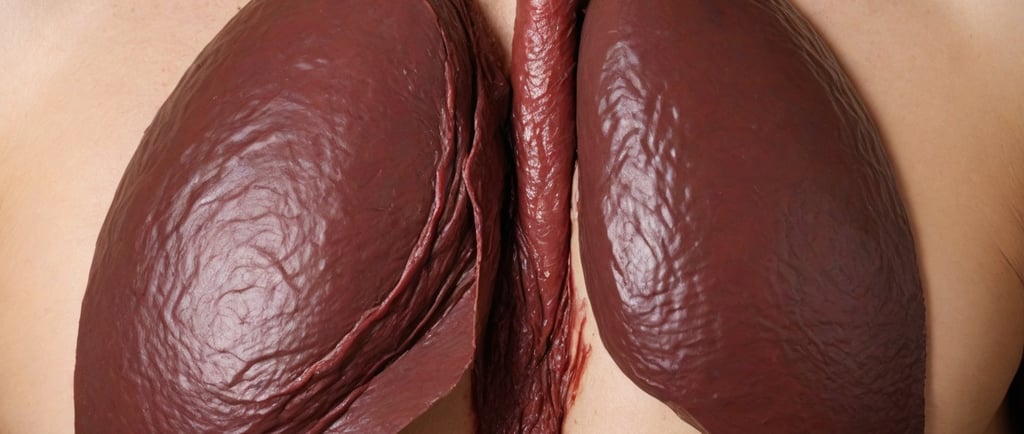"Uncover the truth behind the groundbreaking discovery of the causes of the world's biggest problems. 'The Root Causes' will change how you view the world!"
Understanding Fatty Liver Disease: Types, Causes, and Risks
Fatty liver disease is a condition characterized by excess fat buildup in the liver, which can lead to significant liver damage over time. There are two main types: NAFLD (Non-Alcoholic Fatty Liver Disease), typically linked to chronic conditions like obesity and diabetes, and AFLD (Alcoholic Fatty Liver Disease), caused by excessive alcohol consumption. The causes of fatty liver disease vary, but both types share common risk factors such as poor diet and sedentary lifestyle. Effective management of fatty liver disease includes lifestyle changes for fatty liver, such as weight loss, regular exercise, and proper nutrition, which help reduce fat accumulation and improve liver health.
DISEASES
12/7/20242 min read


What is Fatty Liver Disease?
Fatty liver disease (FLD) is a condition characterized by the accumulation of excess fat in the liver cells. This accumulation can disrupt liver function and potentially lead to severe health complications if left untreated. The disease is categorized into two main types: non-alcoholic fatty liver disease (NAFLD) and alcoholic fatty liver disease (AFLD). Understanding these types and their associated risks is crucial for effective prevention and management.
Non-Alcoholic Fatty Liver Disease (NAFLD)
NAFLD is the most prevalent form of fatty liver disease, occurring in individuals who consume little or no alcohol. It is closely linked to several risk factors, including obesity, diabetes, high cholesterol, and metabolic syndrome. Poor dietary habits, insufficient physical activity, and a condition known as insulin resistance are significant contributors to the development of NAFLD.
Individuals with NAFLD are often asymptomatic in the early stages, but as the disease progresses, symptoms may emerge. These can include fatigue, abdominal discomfort, and an enlarged liver. If left unmanaged, NAFLD can lead to more serious conditions, such as non-alcoholic steatohepatitis (NASH), liver fibrosis, and eventually cirrhosis.
Alcoholic Fatty Liver Disease (AFLD)
On the other hand, alcoholic fatty liver disease (AFLD) occurs primarily in individuals with a history of excessive alcohol consumption. This form of fatty liver disease is a result of the toxic effects of alcohol on the liver, which triggers an inflammatory response and promotes fat accumulation. AFLS is also associated with nutritional deficiencies resulting from poor dietary intake, often seen in heavy drinkers.
AFLD presents a spectrum of severity, ranging from simple steatosis (fatty liver) to more severe conditions such as alcoholic hepatitis and cirrhosis. Early intervention is vital as the liver has a remarkable ability to regenerate; however, continued alcohol abuse can significantly compromise this ability, leading to irreversible damage.
Conclusion: The Importance of Awareness and Lifestyle Changes
Recognizing the signs and symptoms of fatty liver disease is imperative, particularly for those prone to its risk factors. Both NAFLD and AFLD emphasize the importance of lifestyle changes, including weight management, balanced nutrition, and the moderation of alcohol intake. Health professionals recommend regular screening and liver function tests, especially for high-risk individuals. By taking proactive measures, individuals can mitigate the risks associated with fatty liver disease and promote a healthier liver function.
Health
Understanding illness to empower your well-being journey.
Wellness
Knowledge
info@rootcauseprevention.com
903-268-6664
© 2024. All rights reserved.
grfv@sbcgloal.net